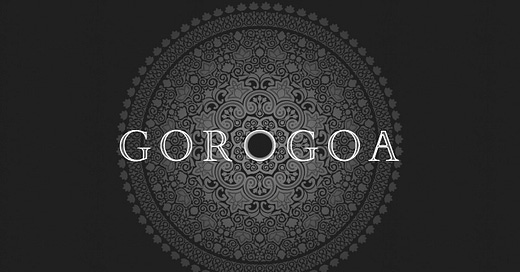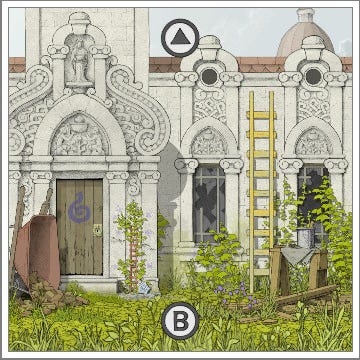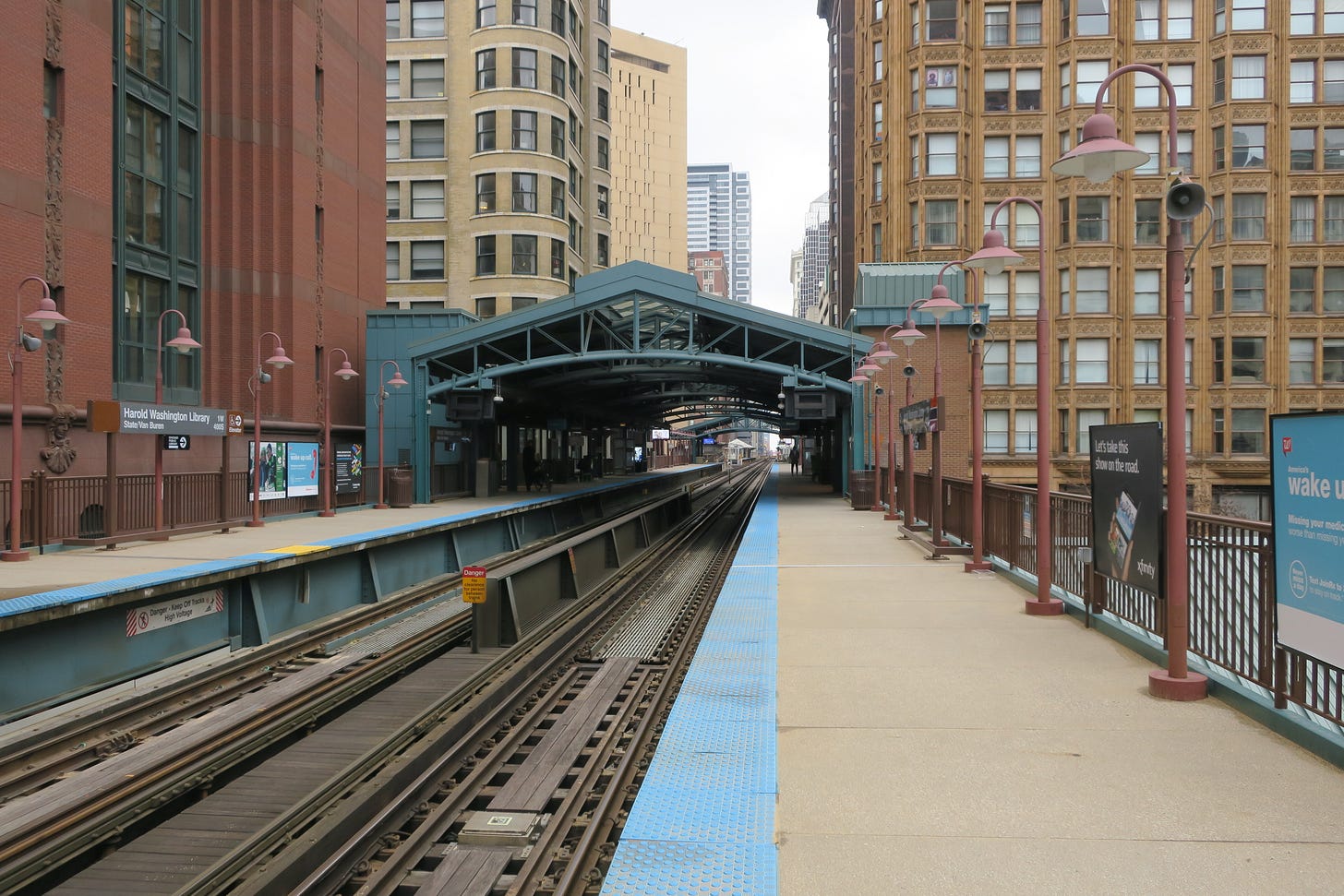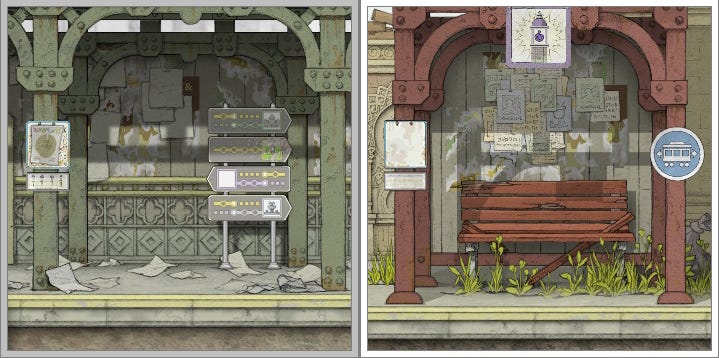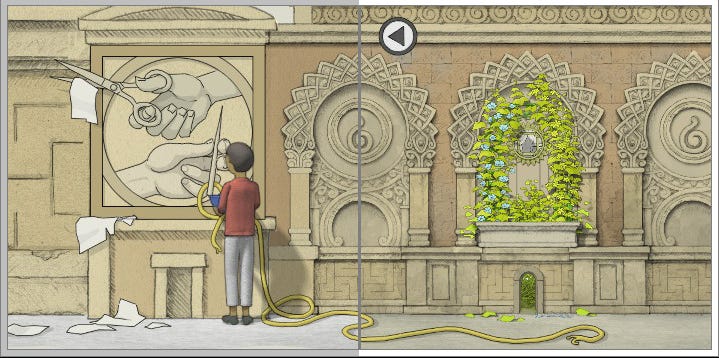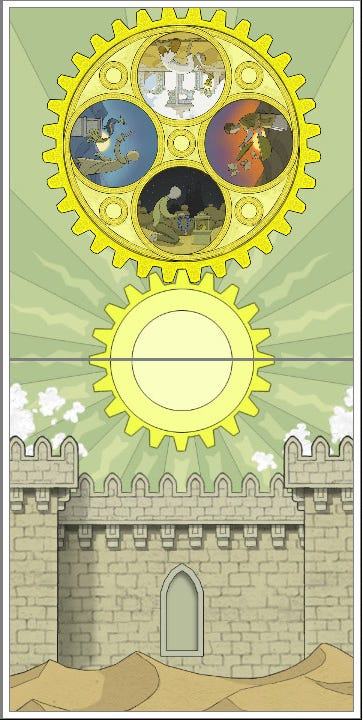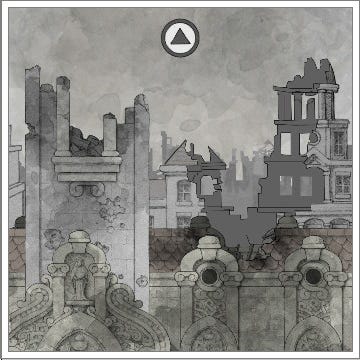Gorogoa: The Architectural Dreamscape
Gorogoa is barely a game. It’s barely anything. It most closely resembles an experience or a memory of the designer and artist Jason Roberts. Though it does share some elements of game design and is experienced on gaming platforms, I think calling whatever this is a “game” is insulting. It is interactive art. It is a digital emotion. Its looking at an incredibly personal artwork or viewing a gallery show that has been curated to give the spectator a glimpse into the experience or memory of the artist. It reminds me of the graphic novel “Daytripper” (highly recommend) or a Michel Gondry movie. It’s a thing, and you should should see it for yourself.
I have cropped screenshots to try to minimize spoilers. That said there will be a section later that lays out tiles in minor puzzle solutions and I will give a spoiler warning at that point.
Annapurna Games (an offshoot of Annapurna Pictures, one of my favorite film studios. Her, The Master, Buster Scruggs, Phantom Thread.) has been making some of the best experiences in videogames over the last few years. Games like Outerwilds (a game I hope to write about in the future if I ever get through it) have completely changed the way that I see video games and what these types of experiences do. Open world RPGs don’t entice me in the same way due to their long time requirement, their tiresome grind, and their meandering pointless side quests for a crumb of story.
Gorogoa cuts all of the fat from the game leaving you with an experience you can get through in a few hours (I think I beat it in like 3 or 4, but miles may vary depending on your ability to solve the puzzles). I recommend playing it on the Nintendo Switch or the iPad. Touch control is how this game was intended to be played; it feels personal.
Why is the experience in Gorogoa so potent? Well, a few reasons I think this experience has cemented itself into my mind:
It was designed and illustrated during a 7 year period by one person Jason Roberts.
It was based on one of Jason’s memories from childhood.
A mythology was built around the memory and framed it with architecture and art that feels mythological.
The entire game is hand drawn.
According to this Paste article the design is partially based on historical reference materials including Byzantine religious icons. It’s easy to see why, it implies a mythology in these memories and in this world.
Byzantine architecture isn’t the only influence. The train station is in a beautiful Art Nouveau and Beaux Arts aesthetic. The skyline of the city beyond has elements of Chicago or New York City high rise architecture; I was reminded of the Harold Washington Library Station in Chicago when I saw it, despite noticeable differences.
I love the details in these close ups of train stops. The small one on the right reminded me of a bus stop in Azenhas Do Mar, Portugal. Again not necessarily in aesthetic, but certainly in its coziness and scale.
The aesthetic of the design invokes certain feelings, but this isn’t the reason the architecture feels so engaging. Elements overlap in puzzles that differ in scale. This gives the impression that the main character’s memories are a mish-mash. You might match up the bottom of a cabinet with the top of a building, or a book binding with a staircase (these are my own mish-mashed memories of this game).
In addition to mixing scales, doorways function as portals to other worlds (which is appropriate since doorways in churches are often referred to as portals). You can pull the facade off a building and place it next to the room you just pulled it from. You can imagine how complex some puzzles become when you mix doorways over different scales.
In the end, I miss my time with Gorogoa. I’ve played it through twice now and I want there to be more. I want to experience some of these places for myself. I want my own memories formatted this way. Maybe some day when I’m old, I’ll design my own way of formatting my memories into some kind of mythology and I’m sure Gorogoa will be in there somewhere.
I want to share a few of my favorite examples of mixing scales and architectural elements. These to me are moments that so thoroughly affected me that I still think about them almost daily.
With that said.
.
.
.
SPOILERS AHEAD.
.
.
.
.

